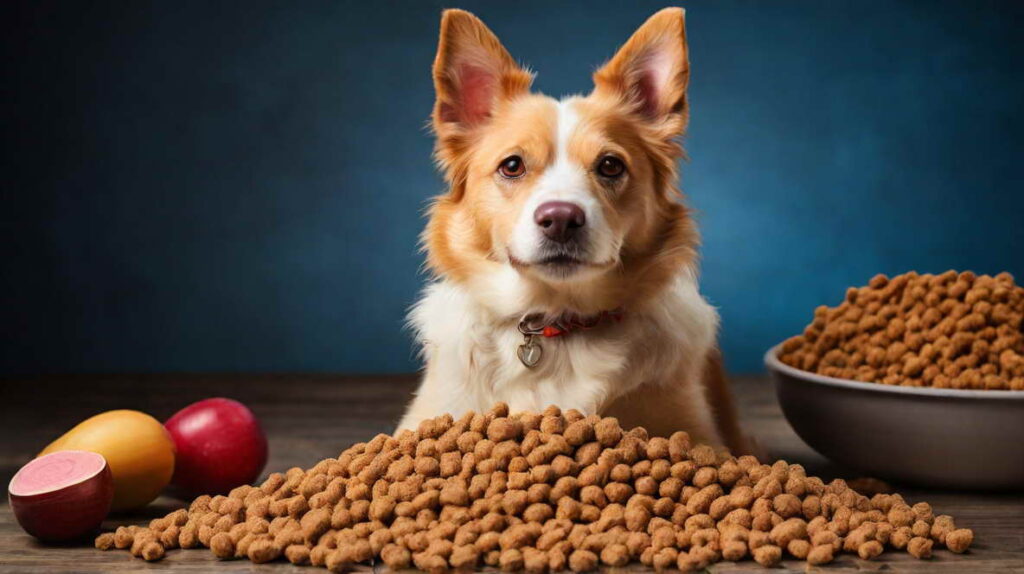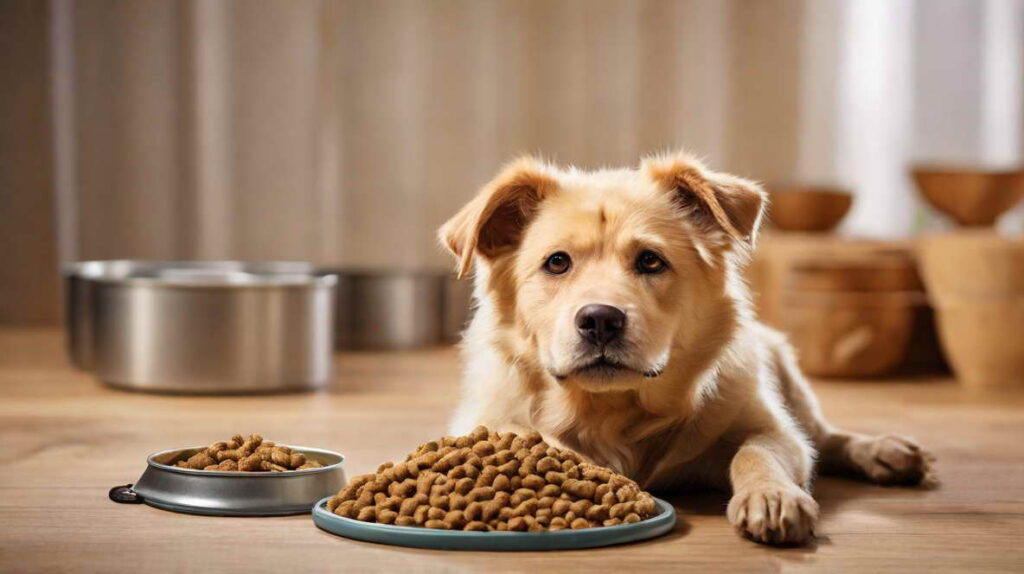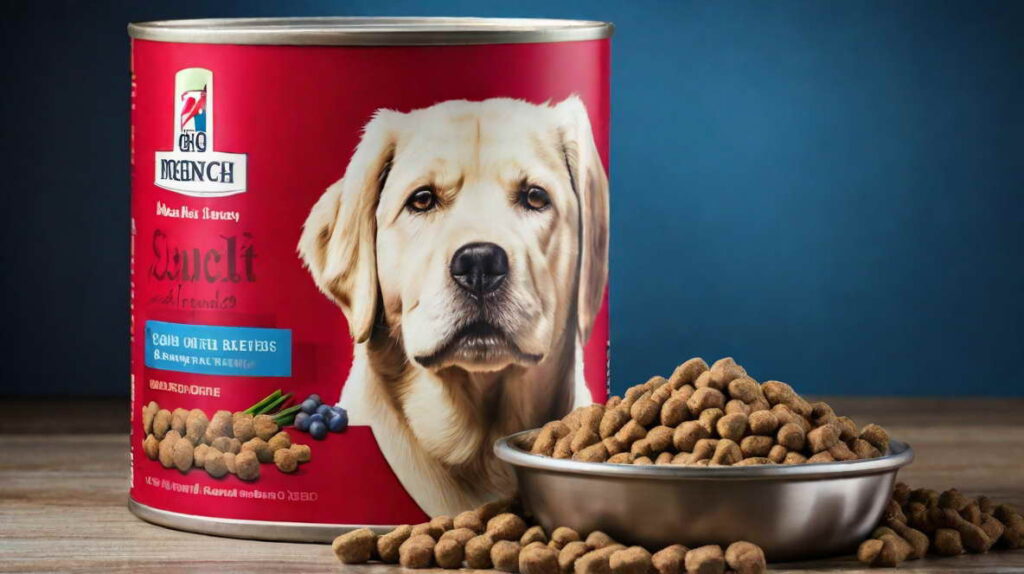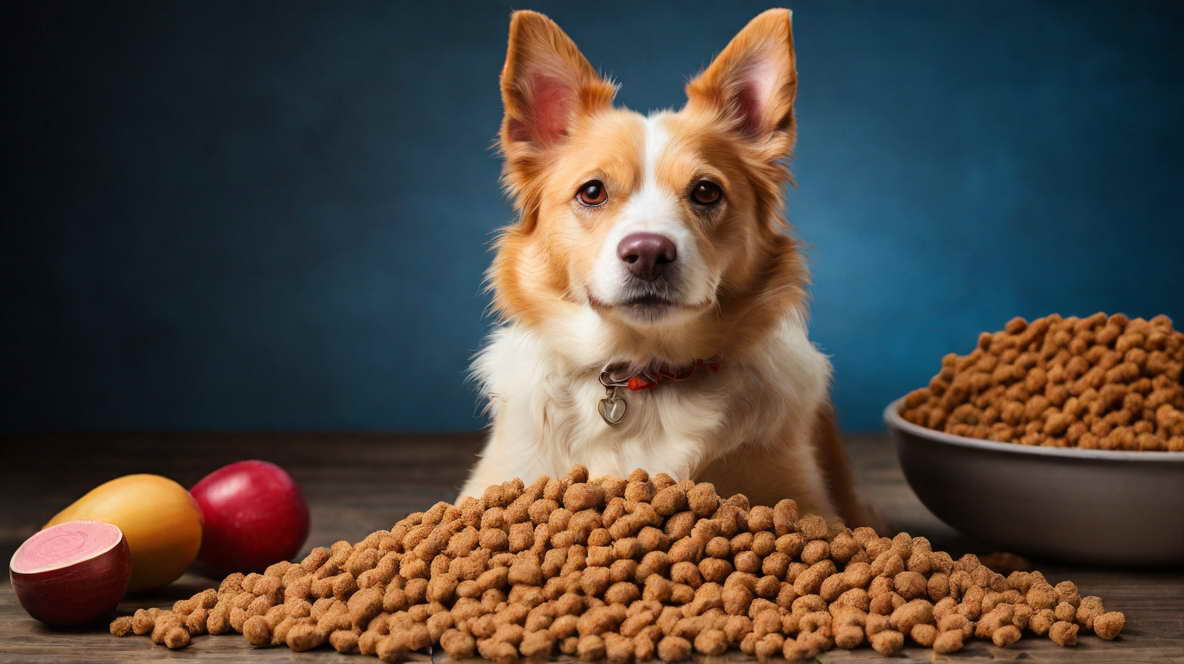
Is Dry Dog Food Better Than Canned Dog Food?
PETSIDI – Hey there, fellow dog owner! One of the most common questions I get asked is whether dry dog food or canned dog food is better for our furry companions. It’s a hot topic in the pet nutrition world, and there’s a lot of debate around it. But don’t worry, I’m here to break it down for you in a way that’s easy to understand.
Before we dive in, let me just say that both dry and canned dog foods can be perfectly fine options for your pup, as long as you’re choosing a high-quality brand that meets their nutritional needs. The real question is, which one is the better choice for your specific dog?
To help you decide, let’s take a look at the pros and cons of each:
Dry Dog Food

As we discussed earlier, dry dog food (also known as kibble) has a few key advantages that make it a popular choice among pet owners. Let’s dive a little deeper into the pros and cons of this type of dog food.
Pros:
- Convenience: This is probably the biggest selling point for dry food. Not only can you leave it out all day without worrying about spoilage, but it’s also incredibly easy to portion out. Simply fill up your dog’s bowl with the recommended amount, and you’re good to go. Plus, dry food is super easy to store – just keep it in an airtight container, and it’ll stay fresh for months.
- Dental Health: The crunchy texture of dry kibble can act like a little toothbrush for your dog’s teeth. As they chew, it helps scrape away plaque and tartar buildup, which can lead to dental issues like gum disease if left unchecked. This abrasive action is great for keeping your pup’s pearly whites in tip-top shape.
- Cost-effective: Let’s be real – feeding our furry friends can get expensive. But dry food is generally more budget-friendly than other options, especially if you buy in bulk. You’ll get more bang for your buck compared to canned or fresh foods.
- Nutrient Density: High-quality dry foods are carefully formulated to be nutrient-dense, packing in all the essential vitamins, minerals, and other nutrients your dog needs in those little bite-sized pieces. This makes it easier to ensure your pup is getting a balanced diet.
Cons:
- Lower Moisture Content: One of the biggest downsides of dry food is its low moisture content. Most kibble contains only around 10% moisture, which means your dog may not be getting enough hydration from their food alone. This can be especially problematic for dogs who don’t drink enough water on their own or those living in hot climates.
- Potential for Contamination: While dry food has a longer shelf life than wet food, it’s not immune to contamination. If left out for too long, it can attract bugs or become stale and potentially harmful to your pup’s health.
- Lack of Variety: Let’s be honest – dry food can get a little boring after a while. While there are different flavors and formulas available, the texture and appearance of kibble is pretty uniform. Some dogs may get bored with the same old dry food day after day.
- Processing Concerns: The manufacturing process for dry food involves high temperatures and extrusion, which can potentially degrade some of the nutrients and make them less bioavailable for your dog’s body to absorb.
When it comes to dry dog food, the key is to choose a high-quality brand that uses high-quality ingredients and is formulated to meet your dog’s specific life stage and nutritional needs. Look for brands that use real, whole foods as their primary ingredients, and avoid those with a lot of fillers, by-products, or artificial preservatives.
It’s also a good idea to rotate between different dry food formulas or brands every once in a while to provide your pup with some variety and ensure they’re getting a well-rounded diet.
And remember, while dry food is convenient and cost-effective, it’s always a good idea to supplement with some moisture-rich foods or add a little water to your dog’s kibble to help keep them properly hydrated.
So, there you have it – a more in-depth look at the pros and cons of dry dog food. As with anything, there are trade-offs to consider, but for many pet owners, the convenience and affordability of kibble make it a go-to choice.
Canned Dog Food

Canned dog food, also known as wet food, is a popular alternative to dry kibble. While it may not be as convenient as dry food, many pet owners swear by the benefits of feeding their furry friends a moist, meaty diet. Here’s a closer look at the pros and cons of canned dog food:
Pros:
- High Moisture Content: One of the biggest advantages of canned food is its high moisture content, typically ranging from 70-85% water. This can be incredibly beneficial for dogs who don’t drink enough water on their own or those who live in hot, dry climates. The added moisture helps keep your pup hydrated and can also support healthy kidney function.
- Palatability: Let’s be real – canned food just smells and tastes more appealing to most dogs than dry kibble. The strong, savory aroma and soft, meaty texture make it more enticing, especially for picky eaters or dogs with a diminished sense of smell or taste (like senior pups).
- Variety: Canned dog foods come in a wide range of flavors, textures, and formulas, making it easy to switch things up and prevent food boredom. From chunky stews to smooth pâtés, there’s something to suit every dog’s taste preferences.
- Higher Protein and Fat Content: Many canned foods have a higher percentage of animal-based proteins and fats compared to dry foods. This can be beneficial for active or working dogs who require a more calorie-dense, protein-rich diet.
- Nutrient Bioavailability: The canning process helps preserve more of the natural nutrients in the ingredients, making them more bioavailable for your dog’s body to absorb and utilize.
Cons:
- Shorter Shelf Life: Once opened, canned food needs to be refrigerated and consumed within a few days, unlike dry food which can sit out for extended periods. This can make canned food less convenient for some pet owners.
- Cost: Canned dog food is generally more expensive than dry kibble, especially when you factor in the higher moisture content (you’re essentially paying for the weight of the water).
- Potential for Dental Issues: The soft, moist texture of canned food doesn’t provide the same abrasive action as dry kibble, which means it may not help scrape away plaque and tartar as effectively. This can increase the risk of dental issues like gum disease if proper teeth cleaning isn’t maintained.
- Environmental Impact: The production and packaging of canned foods can have a larger environmental footprint compared to dry foods, due to the resources required for metal cans and the energy used in the canning process.
When selecting a canned dog food, it’s important to look for high-quality, reputable brands that use real, whole food ingredients and avoid fillers, by-products, and artificial preservatives. Many pet owners opt for grain-free or limited-ingredient canned foods to cater to their dog’s dietary needs or preferences.
It’s also worth noting that canned food can be more calorie-dense than dry food, so portion control is important to prevent weight gain, especially for less active or senior dogs.
While canned food may not be as convenient as dry kibble, the added moisture and palatability can make it a great option for dogs who need a little extra hydration or enticing flavors to get them excited about mealtime.
As with any diet, it’s always best to consult with your veterinarian or a pet nutritionist to ensure you’re meeting your dog’s specific nutritional needs and addressing any health concerns or sensitivities they may have.
Now, let’s dive a little deeper into the nutritional aspects of each type of food:
| Nutrient | Dry Dog Food | Canned Dog Food |
|---|---|---|
| Protein | High protein content, typically coming from animal-based sources | High protein content, often with a higher percentage of animal-based proteins |
| Fat | Moderate fat levels, with a mix of animal and plant-based fats | Higher fat content, mostly from animal sources |
| Carbohydrates | Higher carbohydrate levels, often from grains and plant-based ingredients | Lower carbohydrate levels, with more moisture and protein |
| Vitamins and Minerals | Adequate levels, but may be less bioavailable due to processing | Highly bioavailable, as the canning process preserves more nutrients |
As you can see, both dry and canned foods have their strengths and weaknesses when it comes to nutrition. Dry food tends to be higher in carbohydrates, while canned food is higher in moisture, fat, and protein.
So, what’s the verdict? Well, my friend, the truth is that there’s no one-size-fits-all answer. The best type of food for your dog depends on their individual needs, preferences, and lifestyle.
Here are a few scenarios where one type of food might be better than the other:
- Active or working dogs: These pups tend to do better on a higher-protein, higher-fat diet, so canned food might be a better choice.
- Overweight or senior dogs: Dry food can be a better option for weight management and dental health in these cases.
- Dogs with kidney disease: Canned food is often recommended for dogs with kidney issues due to its lower protein and phosphorus levels.
- Picky eaters: If your dog turns their nose up at dry kibble, canned food might be more appealing.
At the end of the day, the most important thing is to choose a high-quality, balanced diet that meets your dog’s specific nutritional requirements. And don’t be afraid to mix things up – many dogs do well on a combination of dry and wet food.
As always, if you have any specific concerns or questions about your dog’s diet, it’s best to consult with your veterinarian or a professional pet nutritionist like myself. We’re here to help you make the best choices for your furry friend’s health and happiness.
So, there you have it – the lowdown on the great dry vs. canned dog food debate. Remember, both options can be perfectly fine, as long as you’re mindful of your pup’s individual needs and preferences.
Happy feeding, my friend! And as always, give your furry pal a big hug and belly rub from me.

Leave a Reply